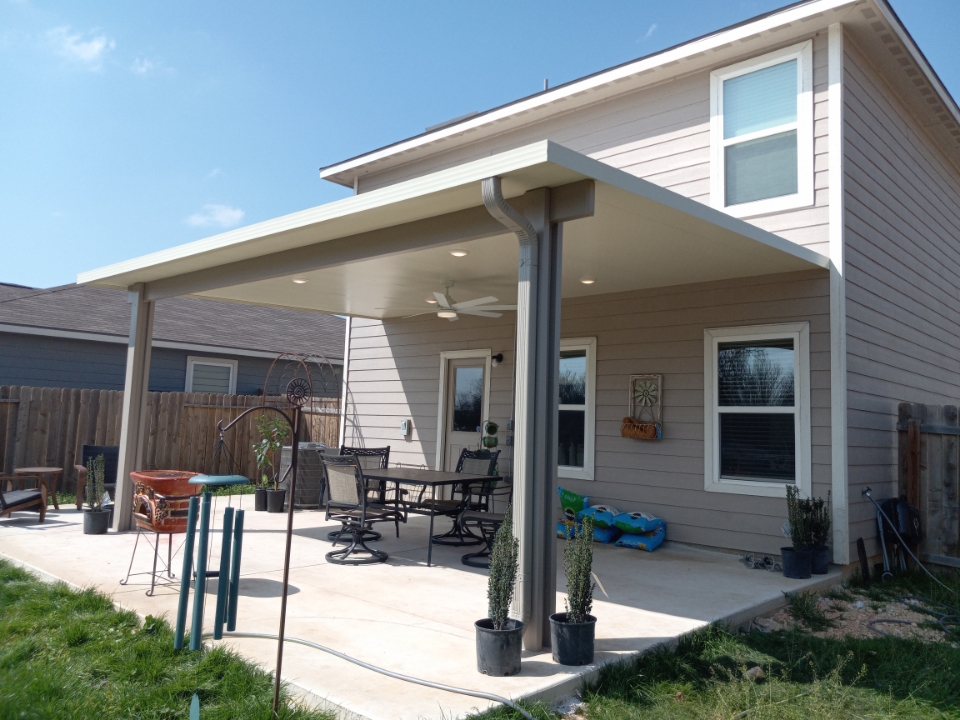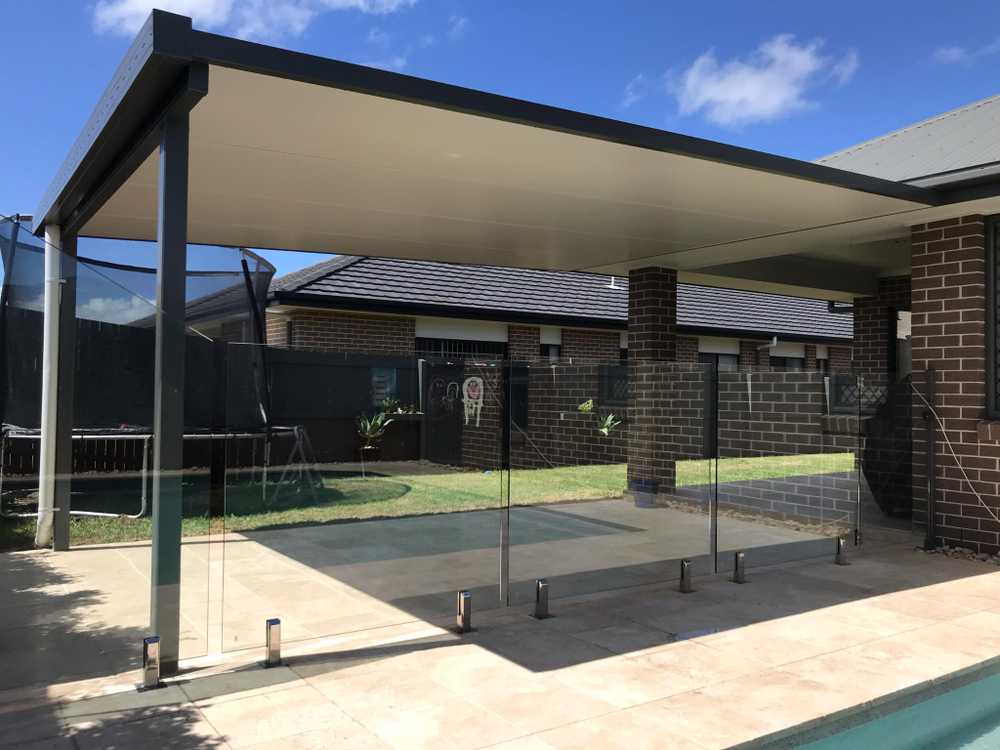Imagine transforming your patio into a comfortable oasis, a space where you can relax, entertain, and enjoy the outdoors. But before you dive into this exciting project, you face an important decision: choosing between insulated and non-insulated patio covers.
This choice can significantly impact your patio’s functionality and comfort. You might be wondering which option is best for your needs. Will an insulated cover provide the year-round comfort you crave, or does a non-insulated option better fit your budget and style?
You’ll uncover the benefits and drawbacks of each type, helping you make an informed decision that enhances your outdoor living experience. Get ready to explore the details that will ensure your patio becomes the perfect extension of your home.

Credit: www.texaspatiocovers.com
Insulated Patio Covers
Insulated patio covers provide comfort in any weather. These covers help in keeping the patio area cool during summer and warm in winter. Their design incorporates materials that resist heat transfer, making them a popular choice for homeowners. They enhance outdoor living spaces by offering a more controlled environment. Understanding their benefits, materials, and climate suitability can guide you in making an informed decision.
Benefits Of Insulation
Insulated patio covers offer energy efficiency. They reduce the need for cooling and heating devices. This can lead to lower energy bills. They provide a consistent temperature. This makes outdoor spaces usable year-round. Insulation also minimizes noise, creating a peaceful space. It protects furniture from weather damage. This increases the lifespan of outdoor furnishings.
Materials Used
Insulated patio covers often use aluminum with foam cores. Aluminum is lightweight and durable. It resists corrosion, making it ideal for outdoor use. Foam cores provide excellent thermal insulation. They block heat transfer effectively. These materials combine for a strong and efficient cover. Polycarbonate panels are also common. They offer protection from UV rays. This prevents fading of outdoor items.
Climate Considerations
Insulated patio covers suit various climates. They provide shade in hot areas. This keeps the patio cool. In colder climates, they retain warmth. This allows for comfortable outdoor activities. They are a good choice for regions with changing seasons. Insulation adapts to temperature changes easily. Understanding your local climate helps in selecting the right cover.
Non Insulated Patio Covers
Non insulated patio covers offer a simple yet effective solution for outdoor spaces. They provide shade and protection from the elements. These covers are lightweight and easy to install. Many homeowners prefer them for their cost-effectiveness and aesthetic appeal. Let’s explore their advantages and design flexibility.
Advantages Of Non Insulated Covers
Non insulated covers are lightweight, making them easy to handle. They provide excellent shade and reduce direct sunlight exposure. This helps in keeping the patio area cool during hot days. Maintenance is minimal, which saves time and effort. Their simple design makes them a popular choice for many homeowners.
Cost-effectiveness
Non insulated patio covers are budget-friendly. They use fewer materials, reducing overall costs. Installation is straightforward, often requiring less labor. This further reduces expenses. For those on a budget, they offer a great value. Enjoy outdoor comfort without breaking the bank.
Design Flexibility
These covers come in various styles and colors. This allows for customization to suit any home decor. Materials range from aluminum to wood, offering diverse options. Their simple design makes them versatile. Easily adapt them to match your outdoor space. Enhance your patio’s aesthetic without compromising on style.
Comparative Analysis
Choosing between insulated and non-insulated patio covers requires careful consideration. Each type has distinct advantages. This comparative analysis highlights key differences. Understanding these factors helps make an informed decision.
Energy Efficiency
Insulated patio covers offer superior energy efficiency. They provide better temperature control. Insulation helps maintain a stable environment. This reduces energy costs significantly. Non-insulated covers lack this advantage. They do not offer the same thermal regulation. Temperature fluctuations occur more frequently.
Durability And Maintenance
Durability is crucial for patio covers. Insulated covers are robust and long-lasting. They withstand harsh weather conditions. Maintenance is typically low. Non-insulated covers may require more upkeep. Exposure to elements affects their longevity. Regular maintenance is often necessary.
Aesthetic Appeal
Aesthetic appeal varies between the two options. Insulated covers provide a modern look. They can enhance the overall design. Non-insulated covers offer a simpler style. They may suit traditional settings better. Design preferences play a role in choice.

Credit: www.justpatios.com.au
Installation And Cost Factors
Choosing between insulated and non-insulated patio covers involves considering various factors. Installation and cost are critical aspects that influence the decision. Understanding these factors can help homeowners make an informed choice.
Installation Process
The installation of insulated patio covers generally requires more time. This is due to the complexity of adding insulation material. The process involves ensuring tight seals to prevent heat transfer. Non-insulated covers are simpler and quicker to install. They often consist of fewer components. This simplicity can be beneficial for those seeking a faster setup.
Cost Comparison
Insulated patio covers usually have a higher upfront cost. This is because of the additional materials needed for insulation. The complexity of installation also adds to the expense. Non-insulated covers are typically more affordable. They involve fewer materials and a simpler installation process. This lower cost appeals to budget-conscious homeowners.
Long-term Value
Insulated patio covers offer long-term energy savings. They reduce heat transfer, lowering energy bills. These savings can offset the initial investment over time. Non-insulated covers do not provide the same energy efficiency. Their lower initial cost may not result in future savings. Homeowners must weigh immediate costs against potential long-term benefits.
Choosing The Right Option
Choosing between insulated and non-insulated patio covers can be challenging. Each option has its advantages and disadvantages. The right choice depends on several factors. Let’s explore these factors to help you decide.
Assessing Your Needs
First, think about how you’ll use your patio. Do you seek shade from the sun? Or do you want protection from rain and snow? Insulated covers offer better temperature control. They keep your patio cool in summer and warm in winter. Non-insulated covers are simpler and often cost less. They’re great for basic sun and rain protection.
Regional Influences
Your location plays a big role in choosing a patio cover. Insulated covers suit areas with extreme temperatures. They provide energy efficiency and comfort. Non-insulated covers work well in mild climates. They offer sufficient protection without extra insulation.
Personal Preferences
Your personal taste matters too. Insulated covers often look sleek and modern. They add a polished touch to any home. Non-insulated covers can be more versatile in design. They allow for more creative and varied styles. Consider your home’s aesthetic and how each type will complement it.
Expert Recommendations
Choosing between insulated and non-insulated patio covers can be challenging. Experts provide guidance to help homeowners make informed decisions. They share insights on energy efficiency, comfort, and durability. This section highlights expert recommendations from various perspectives.
Industry Insights
Experts in construction suggest insulated patio covers for energy savings. These covers help maintain comfortable temperatures in all seasons. Industry professionals emphasize the importance of insulation in extreme climates. Insulated options reduce noise, adding to the tranquility of outdoor spaces. They are often recommended for homes where outdoor space is frequently used.
Homeowner Experiences
Many homeowners appreciate insulated covers for their comfort. Users report reduced energy bills and improved outdoor living. Non-insulated covers are preferred for a more open feel. Some homeowners enjoy the natural light and airflow these provide. Feedback highlights ease of maintenance for non-insulated options.
Future Trends
Experts predict increased demand for insulated patio covers. As energy costs rise, efficient options become more appealing. Future trends may include smart technologies integrated with patio covers. These advancements could enhance both insulated and non-insulated covers. Sustainable materials are gaining popularity in patio cover designs.

Credit: www.try-tech.com
Frequently Asked Questions
What Are Insulated Patio Covers?
Insulated patio covers have layers that block heat. They keep spaces cooler in summer.
Do Insulated Patio Covers Reduce Noise?
Yes, they help in reducing noise from outside. Perfect for peaceful outdoor areas.
Are Non-insulated Patio Covers Cheaper?
Generally, yes. Non-insulated covers are usually more affordable. They have fewer materials.
Which Patio Cover Is Better For All Seasons?
Insulated patio covers are better. They provide comfort in both hot and cold weather.
Can Non-insulated Covers Protect From Rain?
Yes, they shield against rain but don’t offer temperature control. Suitable for basic weather protection.
Conclusion
Choosing the right patio cover depends on your needs. Insulated covers offer temperature control, perfect for year-round use. Non-insulated covers provide basic protection, ideal for simple shade. Consider your budget and climate. Insulated may cost more, but provide comfort in extreme weather.
Non-insulated are more affordable. Think about the look you want. Insulated covers often look modern. Non-insulated can be more traditional. Decide on the style that fits your home best. Both options can enhance your outdoor space. Make the choice that suits your lifestyle and preferences.
Enjoy your patio!




